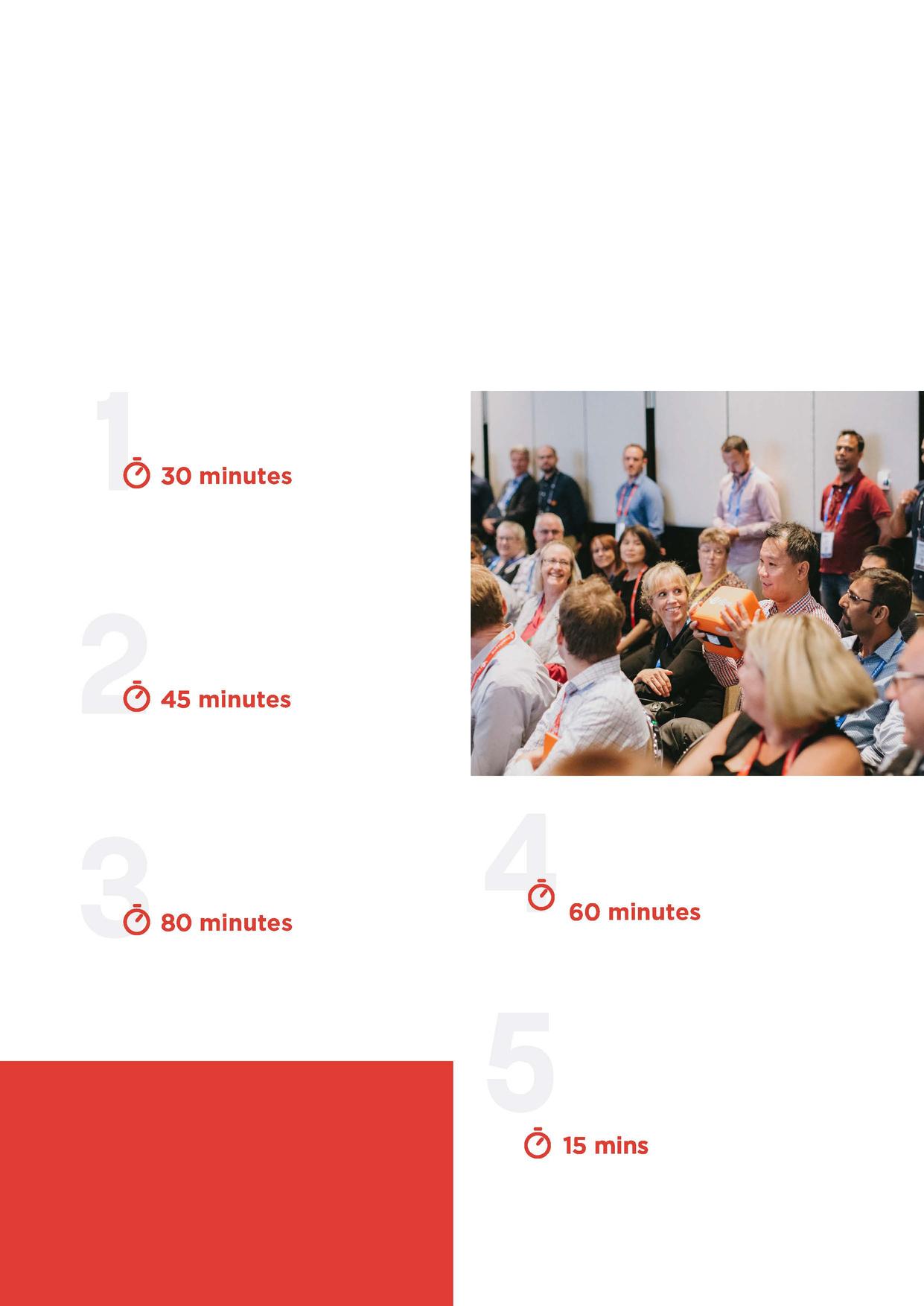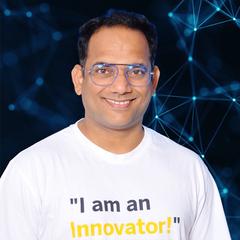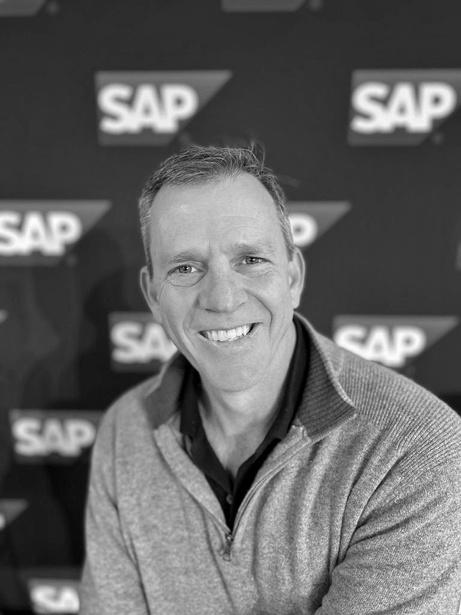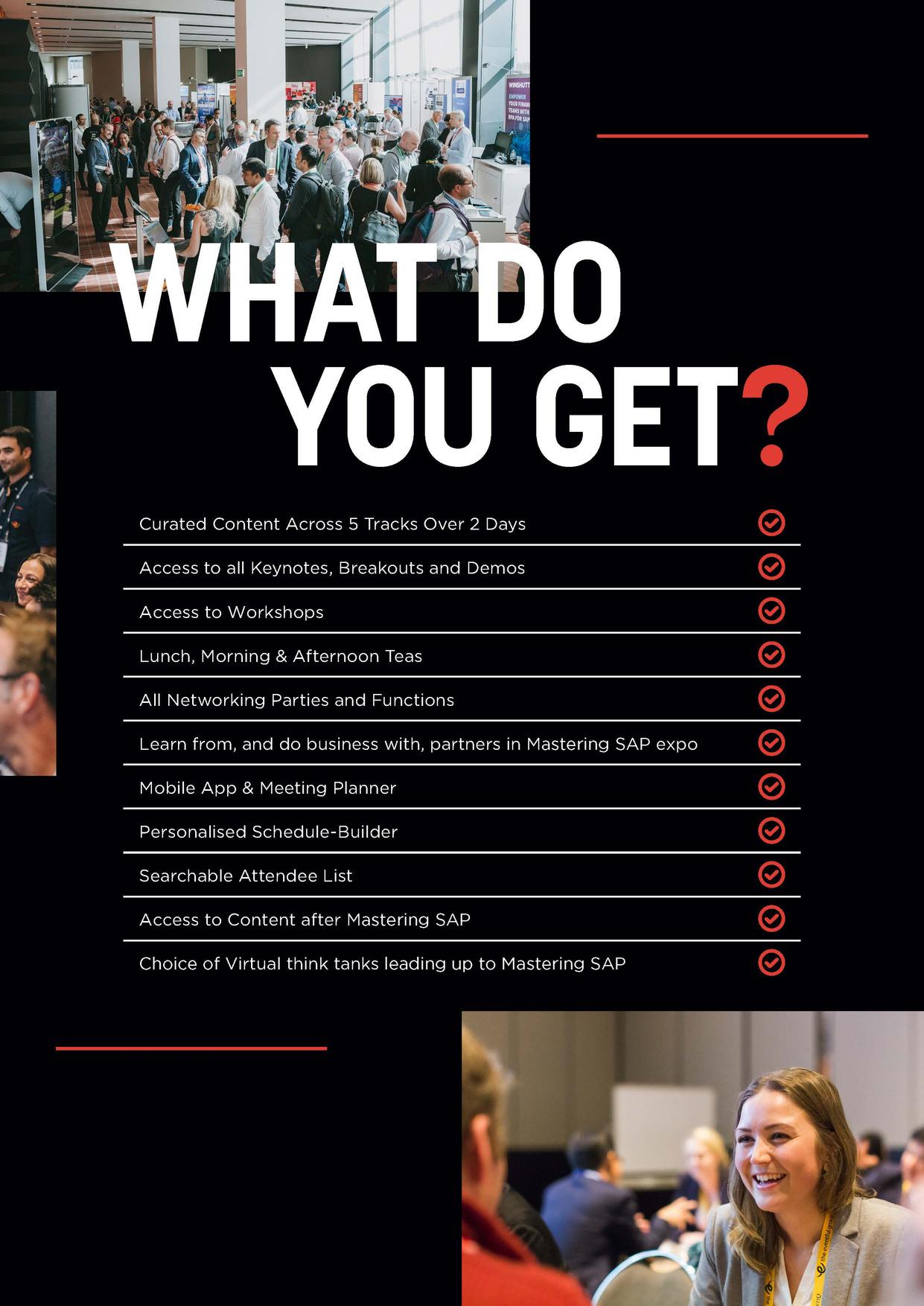






















Our Industry "Birds of a Feather" Sessions (BoFs) are a must attend.
What are they?
Birds of a Feather sessions are informal expert-facilitated gatherings of individuals within their industry groups, who wish to discuss topics pertinent to that industry in a “unconferenced”, crowd sourced, content-delivery-light, pre-planned way.

Running from 2.30pm – 4.30pm on Sunday 13th November, 4 Industry groups will assemble:
Rail Utilities Defence Mining
So, if you are coming to the conference please join us on Sunday afternoon. Whether you plan to listen, network or share some of your pressing challenges, come meet up with your people to start the conference experience.



In these challenging times, many people feel more disconnected from their co workers. They are working from home but losing trust and a sense of purpose. The Great Resignation is a sign of this loss of belonging.
It is time for leaders to focus on rebuilding connections and strengthening their sense of purpose and meaning to drive performance. Leadership is about more than just giving orders. It's about inspiring people to achieve common goals. And in these uncertain times, that means creating a sense of connection and belonging. Organisations must show empathy and understanding for their employees' challenges. They need to develop a sense of purpose that goes beyond simply making a profit. And they need to provide the support and resources employees need to perform at their best. Strong leadership will be essential to rebuilding trust and connection in the workplace And this keynote provides the critical insights to manage through these difficult times.
Murray Reformed Management Consultant CEO & Founder - Empathic Consulting Daniel
Daniel
At Lion, our transformation began with the technology and as we implemented SAP S/4HANA plus a host of SAP products and cloud based services including Ariba, IBP, Fieldglass & Supply Chain guru. We put our old ERP and a swathe of legacy systems out to pasture, as we developed an integrated digital core. Next, we turned our attention to looking outside the organisation: to our supplier network and planning function. Our objective was traceability and real time visibility with a focus on better inventory control and customer service. Of course, our mantra is ‘right first time’ but we also need to be able to remediate quality and recall issues with minimum effort, should they arise. Reporting around sustainability targets and carbon footprint was another driver.
What we have learned is that when taking on a journey of transformation, while you start with the technology (digital) transformation layer, this only enables a full transformation in the business, ‘digital does not the transformation make’. Transforming your processes, reskilling your people, recruiting new skills and considering your operating model, all need to be transformed.
Come join Kendall Nicholas, Global Digital Supply Chain Director at Lion as she shares how they have reimagined themselves by adopting the Lion spirit of true pioneers Kendall is a Technology strategist and Supply Chain professional passionate about FMCG and all thing Technology. Her ability is being able to build trusted relationship with board, C suite, management and shop floor. Her cred comes from having worked across Research & Development, Manufacturing, IT, Program & Project Management, Warehouse & Distribution and Delivery to Customer strategies.
 Kendall Nicholas
Global Digital Supply Chain Director
Lion
Kendall Nicholas
Global Digital Supply Chain Director
Lion
In this address Graham Macleod and Norm Poynter will recap the past few years of Precision Drillings implementation and use of SAP S/4 Technologies.
How simple concepts can lead to big savings.
How visibility through reporting (PowerBI and SAC) can get the senior executive listening.
And with Dieter Hässlein – SAP’s head of Development: EAM, along for the ride, we'll discuss from a customer perspective:


What does it take to move to make use of SAP’s APM tool. What does the future look like for Precision Drilling and how is the APM tool supporting the journey.
Poynter (CAN) Co-founder and Managing Director Asset Management Advocates NormThe people who are crazy enough to think they can change the world are the ones who do. Gus Balbontin is one of them. He’s an investor, entrepreneur, founder and explorer who has spent two decades helping businesses adjust strategies, products, services, culture and individuals to better deal with rapid and regular changing markets. As the former executive director and CTO of Lonely Planet, Gus led one of the most loved brands in the world through significant disruption. Gus remains heavily involved with the startup scene around the world. He will delve deep into the digital transformation of the past two decades, sharing stories of how so many companies mishandled this seismic shift and how today’s business leaders can capitalise on the disruption that’s still occurring today.
 Balbontin Investor, Advisor, Adventurer
Gus
Balbontin Investor, Advisor, Adventurer
Gus

How can you increase asset uptime, reduce maintenance cost, and achieve resilient operations at the same time? Learn how SAP’s solutions for Asset Management help you to define effective maintenance strategies and plans to avoid breakdowns and reduce cost with efficient maintenance planning and execution.
See how SAP has put the maintenance user at the centre and simplified the asset management process in S/4HANA, leading to higher user productivity and more efficient maintenance planning and execution of work.
Understand SAP’s strategy and future direction for asset management, so that you can make the right decisions as you map out your future digitisation strategy for asset management.
Hässlein (GER) SVP,Dieter
Head of Asset & Service Management, SAP SE


Recent advancements in the worlds of space technology, artificial intelligence and cyber security have made things possible today that were unimaginable a few short years ago. Technologies such as drones and UAVs have now become mainstream assets for organisations seeking to automate processes in the field. When combined with high speed data processing, 5G and advanced AI, the insights gained and costs saved can be material even for the world’s largest organisations. But these evolutions come with risks cyber criminals and nation states can exploit technology and data for their own nefarious purposes, or simply to disrupt. Lisa Bouari, the EY Oceania lead for AI, and Richard Watson, EY’s Global & Asia Pacific Cybersecurity Leader will talk through these advancements, and how to take advantage of them safely.
 Lisa Bouari Oceania lead for AI
EY
Richard Watson Global & Asia-Pacific Cybersecurity Leader
EY
Lisa Bouari Oceania lead for AI
EY
Richard Watson Global & Asia-Pacific Cybersecurity Leader
EY

By using the right combination of technologies for your organization’s specific needs, you can solve complex challenges and create innovative business outcomes.
Planning as a business practice is about looking into and predicting the future.
Learn how better planning revamped with artificial intelligence can have both direct and indirect impacts on supply chain resiliency. Understand the benefits of planning as it pertains to resiliency and sustainability.
Synchronize your plans between Sales, Operations, Finance, Manufacturing, Logistics and Procurement
Set the right inventory levels within your network Build an agile planning environment that can switch between demand and supply driven supply chains Make sustainability as part of your planning and optimization process
Hero (GER) Head of Development – Digital Supply Chain SAP Franz

How can you ensure highest asset availability to meet your company’s production output targets, while reducing maintenance cost? How can you become a learning maintenance organisation, continuously improving asset performance?
Learn how you can safeguard uptime by applying the right maintenance strategy for each asset (preventive, predictive or still run to failure?) and reduce cost by avoiding wasteful over maintenance at the same time.
Understand how SAP has re engineered its Intelligent Asset Management solutions to enable a closed loop process, which directly links your maintenance strategy from asset criticality assessment with maintenance planning and work execution and enables you to apply learnings from your work execution to improve your asset strategies.

Overcome the silos between reliability engineering and the maintenance by working on the same equipment models and operational data. Use IoT and Machine Learning for equipment health monitoring and predictive maintenance. Continuously improve your asset performance by updating your maintenance strategy for individual assets based on your operational experience.
HässleinDieter
(GER) SVP, Head of Asset & Service Management, SAP SE
Railroads operate on a complex network of tracks. Train issues due to locomotive failure on one side of the network can quickly snowball and adversely impact other parts of the network. Therefore, the reliability of railroad operations heavily depends on the reliability of locomotives and their mechanical components which are subject to unexpected breakdowns.
Norfolk Southern (NS) locomotives transmit 350+ diagnostic elements about their engines and mechanical parts in real time to the back office. Utilizing a multitude of historical and real time diagnostic data and a history of component failures, NS has created a reliable Artificial Intelligence (AI) based predictive model that detects mission critical breakdowns with a high degree of confidence on average a week in advance. Integrated seamlessly with SAP based Locomotive Health app, the AI operates autonomously and generates a work order within the SAP EAM suite. This gives visibility to the locomotive shops and crews about the health of the locomotive and gives them enough time to address the issue thus preventing impacts on operations.
In this session you will gain insights into:
Business use cases and problems and how mobile technology was used for the solution
How Norfolk Southern is utilizing investments in IOT to drive operational efficiency and effectiveness. How a shift to agile mindset and practices enables rapid value delivery
Catron (USA) Assistant Vice President of Information Technology, Norfolk Southern Lynnanne
Lynnanne
Asset intensive companies with large geographical footprints such as railroads are the most appropriate candidates to implement Linear Asset Management, due to the complex nature of maintaining a distributed network of assets spanning large amounts of distances. This requires the use of a robust work management system such as SAP EAM, with well defined asset hierarchy, standardized business processes and an integration to a geospatial processing application such as Esri GIS. The outcome of implementing Asset Management with these enablers will allow field workers to easily locate and execute maintenance inspections, repairs, preventive maintenance, etc. using a mobile device equipped with maps that enable the worker quickly to identify the work location and execute the work management process on their mobile device. The focus of geospatial data integrated into the SAP EAM Asset Hierarchy allows us to tie these two core components to managing linear assets together.
Understanding of cross organizational success factors for Asset Management
Best practices around the development of the shared vision and roadmap for Asset Management
Understanding of foundational technical architecture and data structure
Deployment of EAM within an Agile framework
Catron (USA) Assistant Vice President of Information Technology, Norfolk Southern
Railroads operate on a complex connected network of tracks. A train incident on one side of the network can quickly snowball and adversely impact the other parts of the network, resulting in significant delays to the delivery times or impact the safety of operations. To stay ahead of this, visual train inspection is performed when the trains arrive at or depart terminals. The visual inspection process requires walking along the train while assessing each rail car for 300+ different defects. This is a time consuming process and vulnerable to human limitations such as adverse weather conditions including fog, snow, or low visibility.
NS is imaging trains from various angles as they pass by at up to 60mph using high speed camera technology deployed at the trackside. A set of highly reliable AI models then crunch through terabytes of images in real time to search for defects using edge computing technology. Upon finding a defect, all relevant information (such as rail car identifier, time, location) and corresponding defect pictures are sent to the operations center for defect resolution coordination. With seamless integration with SAP EAM suite, simultaneously, a defect record is generated for mechanical crews to handle the issue based on its level of criticality. This can include bringing the train to a safe stop and addressing the defect immediately in case of critical defects thus preventing a train incident and adverse impacts on operations, improving safety, and enhancing reliability of the service product
In this session you will gain insights into:
Business use cases and problems and how mobile technology was used for the solution
How Norfolk Southern is utilizing investments in IOT to drive operational efficiency and effectiveness. How a shift to agile mindset and practices enables rapid value delivery
Catron (USA) Assistant Vice President of Information Technology, Norfolk Southern Lynnanne
Lynnanne
Fiori may very well make you Fiori ous until you learn how to use it. It doesn’t have all the same functionality as GUI but it doesn’t need to. What is lacks in some areas, it more than makes up for in others.
This presentation will explore the functionality of Fiori vs GUI including tips and tricks to get the most out of Fiori. Whether you are currently using Fiori or are thinking of implementing it, this session will have something for everyone. The live demo will showcase Fiori tiles, Find apps and other little known functionality that the Sunwater team have found useful in the last two years since go live.
Using saved Fiori tiles to streamline Notification and Work Order approvals, execution and closure Functionality in the Fiori Find apps vs GUI List Edits Tips and tricks to improve usability of Fiori apps
Hlinovsky Business Process Lead (EAM) SunWater Vicki
Vicki
Ausgrid’s Network Control Room was dependent on a legacy MS Access database to capture defective mains assets. This database was at end of life cycle and had no integration to SAP Works Management. This resulted in delays identifying and fixing critical network assets, lost data, duplication, and lack of transparency in the Network Control Room on the status of critical asset repairs and online readiness.
To close this gap, Ausgrid have built a customized update function between our ADMS (SCADA System) and SAP. This has resulted in a real time solution always showing defective asset state and on line readiness within ADMS and SAP. The outcomes include enhanced work planning and execution, improved asset utilization and greater network control.
How to ‘herd cats’ building team collaboration, some consensus. and effective delivery on a global project in a global pandemic Data Ninja Masterclass how to optimize dense, legacy based asset data to give intended outcomes instead of roadblocks & headaches. Consolidation & Alignment breaking down process and system siloes to achieve end to end process transparency and uplift business results
Jenkins Senior Solutions Analyst Ausgrid Sarah
Sarah

SAP is continually improving their content. One of the SAP programs where improvements are identified is from the SAP Customer Influence/connect program. The thing is, does the average user know what this program has delivered? Probably not. In this presentation we will look at some of new Business Functionality delivered by this program throughout the different enhancement packs to S/4 Version 2021. The final part is the answer to the main question that will be asked ‘What do I communicate to the IT Team to action and deploy these changes?’
Identifying the new EAM Business functions that are useful Understand how to access the detailed information for the changes Communicating how to activate these changes Don’t rely on your IT Team to identify new content they might not Beware of any change management and training requirements when the content is activated
Graham Johnston Work Management/EAM Consultant Assets & Corporate Technology, AGL Energy
OZ Minerals, a modern mining company, invested in SAP Analytics Cloud (SAC) to support their reporting, analytics and planning processes, giving the individual assets the ability to build, manage and support their own financial and operational planning and reporting capabilities.
Implementing SAP Analytics Cloud with integration to SAP S/4 HANA provided the perfect opportunity for our Engineering & Maintenance teams to shift away from time consuming, complex budget spreadsheets and aim towards an agile Zero Based Budget methodology by building the required models, stories, and dashboards in SAC alongside the tools to easily maintain EAM master data in SAP. To reach these strategic aspirations, we will dive into the following topics:
Our journey, the building blocks of SAC and how it embraces a more agile approach to maintenance budgeting The importance of having accurate SAP master data and the tools we used to speed this up Looking to the future additional use cases and integrations for Maintenance within SAC
DeanRigelsford EAM Business Partner OZ Minerals
There’s so much hype about Master Data Management and Data Quality as more and more companies are realising the critical role of data in the era of the digital supply chain and asset management.
To tackle the challenges of data quality, especially in the digital supply chain world, we need to understand that data quality needs to match the expectation of users who will consume it in whatever job function they’re in.
Your data, whether it’s assets related or spares related, can be measured against several criteria to determine its ‘wellness’, hence, its quality. And what are the criteria used? They vary depending on your business requirements and your end users.
We recommend measuring against these criteria Accuracy, Validity, Uniqueness, Completeness, Consistency, Timeliness, Integrity, and Conformity. These criteria should also be set up as rules in your Data Quality Management system to always maintain high quality data. Join this session to understand how you can champion each data quality criteria in your digital supply chain transformation.
Bakaya Global Head of Marketing Prospecta Software Rahul
Rahul
Endeavour Energy was working with a system landscape that had numerous applications that were past vendor support life, in addition many were disaggregated. We had business ‘Silos’ and varied ways of working across 21 sites and we suffered the proliferation of off system databases and tools to report. The implementation of SAP was embarked on to not only update our systems but also streamline the way we planned and executed our work. Our ambition was to set the foundations for growth and innovation.
We’ve now been live with SAP S/4HANA’s PM and Supply Chain Mgt solutions for the past 12 months and have changed key processes and set a foundation for future improvements including gaining value through data insights.


To sell people that the implementation will be the panacea, only disappoints, one of the numerous lessons. The other was that preparation within the context of expectation setting, training and the change management journey is everything.
Capital delivery of over $150m p.a. migrated over to SAP S/4HANA, Click and ADMS in the first year of go live Real experience with a live system is no substitute for workshops and demos.
Bringing together different functions solves problems with the aid of different vantage points
Built to replace the existing paper forms, which are required to be completed before a vehicle is used. Using build.me and Fiori, to design a simple user interface, making it quick and snappy. There has been a successful take up, business is rolling out across more sites and Fortescue are achieving a improved turn arounds on vehicle maintenance requests/repairs.
The Fiori solution is intuitive, offers great UX and no training required.
Maintenance requests identify in real time Visibility of prestart’s being performed
No paper trail
Jeff Albert Maintenance System Lead
Fortescue Metals Group

It is well understood and agreed that planning and scheduling are the key processes to drive efficiency in maintenance work execution However, many organisations still cite this as an area where process improvements can be made. In this session we will show how the latest SAP solutions have changed to better support the planning and scheduling processes.
The session will cover:
The new apps and simplified process for work screening, planning and backlog management
How the backlog management supports a more seamless handover to devising the weekly schedule and feeds into schedule compliance reporting
How detailed dispatching and crew management is supported
Simon Miller Senior Solution Adviser, Digital Supply Chain

SAP
Tim Jones Solution Advisor, Digital Supply Chain SAPAusgrid recently renewed their aging and out of date SAP MAM inspection application with BlueWorx primarily to ensure compliance with cyber security and supportability. In achieving this outcome the project also provided a more user friendly, more robust and flexible solution that has been incrementally deployed at Ausgrid and even now continues to be deployed to cover more users and business processes. The product was originally deployed to Fleet a year ago who received an upgrade during this project and then extended to Poles, Wires and Street Lights. In this talk we will explore the decisions we made in removing customizations present in MAM as well as developments that had to be added to support Ausgrid specific usability and adoption requirements. A quick demo will be shown of the key features including, maps and touch based interface, collection of failure information via photos not codes and simplified UI to support high volume data input.
What you will get from this presentation:
An understanding of how Ausgrid worked with the users and the implementor to get the balance between standard solution and customizations to drive adoption
A demo of the key functions in the solution that are important to Ausgrid
Some feedback from users about what they think of the solution What they like and don’t.
Some sage advice on how to refresh our mobile solution
David Sidney Project Manager Ausgrid
Data management fundamentals exist within and across all interfacing SAP ERP modules. Origin implemented SAP across all business units (Corporate, Retail, IG, GEN & LPG), which requires interfacing global configuration, ensuring this is carefully considered and managed. Origin IG have defined Manage Information as one of their core business processes. By treating their SAP data as an asset, is to recognize its inherent value.
Maintaining and enhancing that value through intelligent / robust data quality tools, provides a sustainable data model, ensuring insight to growth opportunities can be realized. The IG SAP Data governance landscape has been designed around a Federated Data Model with a Passive Data Governance overlay.
Hear how Origin IG's SAP Passive Data Governance relies upon business rules defined in the Ataccama DQ tool, generating exception reports flagging records that do not meet data quality standards. It does not constrain user inputs into the ERP system, so does not introduce business inertia.

SAP Data Governance Principals
What is a Federated Data Model?
What is SAP Passive Data Governance?
Rasmussen SAP Data Management Specialist Origin James

We are seeing unprecedented levels of investment in asset construction in Australia. The design and construction of complex assets is a challenging exercise requiring orchestration of many parties. Digital transformation of the delivery and management of complex projects is a major opportunity to reduce the risk of cost overrun and delay It requires action on technology, leadership, people, data management and process.
SAP’s vision is to create a complete digital ecosystem, built on trusted and reliable data, that connects those responsible for assets with their suppliers, service providers, stakeholders, and customers. We aim to promote cross organisational cooperation, by actively supporting data sharing and digital collaboration, to re invent how organisations partner together to design, build and operate complex assets
In this session, we will share how SAP can support the design and construction of complex assets, including capabilities that address:
Portfolio Management with Stage Gates
Collaborative Project Management and Resourcing Continuous Digital Handover with Digital Twin Management and Visualisation
Integration of Design, Build, and Operate perspectives
HOW SAP IS EVOLVING TO MEET MODERN CHALLENGES IN PROJECT, PORTFOLIO AND CONSTRUCTION MANAGEMENT
TasNetworks’ enterprise asset management and procurement processes are heavily linked. Business time and cost performance metrics are directly impacted by the effectiveness of the procurement processes that emanate from EAM and other business functions. However, it became apparent that expected procurement processes were not being correctly followed, resulting in procurement, invoice payment and key material delivery delays.
In order to tackle this SAP Signavio has been implemented to analyze the Procure to Pay end to end process. Signavio has enabled us to see where expected business process is not being followed, but more importantly be able to measure the time impacts to process steps as a result. More importantly, we can measure our process improvements made.
Business drivers for implementing Signavio
Demonstration of the basic Signavio components
Key business insights being gained from the tool
Future plans to move into analyzing the notification/work order end to end process

Scoping opportunities for process automation
David Kruijver SAP SpecialistTasNetworks


With collaboration from more than 100 global customers, SAP has released a standardised approach for maintenance, repair, and operations (MRO) planning utilising SAP Integrated Business Planning (IBP). SAP have designed a new set of processes that closely link material supply planning to maintenance planning processes. IBP for MRO establishes a consensus plan based on the “voice of the asset”, bringing demand planning, maintenance planning, inventory optimisation, and procurement closer together, and focusing on overcoming unexpected maintenance delays due to lack of spare parts availability. Combining SAP’s IBP, Logistics and Intelligent Asset Management solutions allows creation of a unified strategy that not only improves spares availability, but also makes best use of the end to end supply chain network.
With current supply chain issues likely to be with us for some time, are you ready to orchestrate the parts and materials supply chain in concert with your maintenance plans to ensure parts are available at the right location and the right time; not gathering dust in the wrong location?
Adam Peanna
Google has data capabilities that can augment SAP and help customers gain insight and optimise processes across the entire supply chain. From UPS saving $400M p/a in costs by leveraging Google's Intelligent Routing to Australia Post rebuilding their event management system natively in Google Cloud customers are achieving outcomes using technologies like Google's leading AI and ML.
In this session Google Cloud will demonstrate, through customer examples, how Google's technologies can complement SAP's business process software to optimize supply chains
Particular areas of focus will be:
How Google's unique insights into customer data and trends turn demand forecasting into demand sensing Inventory optimisation and warehouse management to allow for faster, safer and more sustainable delivery options Leveraging unique Google capabilities (like Search, Wing and Maps) to rethink fulfillment
Dearlove SAP SpecialistGoogle Cloud
PaulWhen Liberty Primary Metals Australia, part of the GFG Alliance made the move to merge multiple legacy SAP systems onto a single S/4HANA instance they had to tackle the merger of the businesses Supply Chain and Asset Management strategies from different businesses. This journey relied heavily on a data management approach. Kenith will share how LPMA utilised SNP CrystalBridge® and how the approach has offered LPMA a fully automated data driven migration from several legacy SAP systems to a single SAP S/4HANA instance, giving the business an insight into how each business was really using SAP and guided them onto a path of data and business process harmonisation in the single platform.
Hear about LPMA’s experiences, lessons and how it has been instrumental in improving LPMA’s Asset Management and Supply Chain operations.
Regardless of your complexity, SAP S/4HANA is achievable

Why this was the right migration approach for LMPG How does a data driven migration to SAP S/4HANA open new opportunities?
How can SAP S/4HANA projects drive business process harmonisation?
Kenith Gee Head of ITLiberty
Everyone has a story to tell about the management of Contractors within and without their organisation. There are many dimensions to be considered from qualifications, people management, sourcing and contracts through to task planning in asset management and short and long term planning & scheduling all with complex interactions.
Asset Intensive organisations have a significant opportunity waiting by improving operational performance both for the Asset Owner, and also for the Service Provider.
If you want to be better at managing your contractors or you are a service provider and want to lead the improvement opportunity, even if you think we can do better than email for collaborating then come along and hear where to start your journey, what excellent looks like and why contractor management is a lot like pasta sauce.

Topics covered:
The different process elements that are needed for Excellence in Contractor Management A phased approach for your organisations journey A vision for collaboration and the benefits for the Asset Owner, Operator and Service Provider
Graham Nicholson

Planning high volumes and complex work orders is an extremely challenging task that requires matching resources with work demand. Using Artificial Intelligence applied to this real business problem can create cost savings and enhanced business outcomes. When planning one needs to ensure work orders are completed as close to the set point as possible and that the maximum number of assets are attended during an outage.
ElectraNet implemented a cloud optimization solution where ElectraNet’s outage planning rules and KPIs were documented and captured by an application by a provider called Daitum. The weightings of the KPIs are fully adjustable, allowing them to change as ElectraNet’s network changes. The biggest benefit is on the saving of planning time, where the use of AI technology helps create a plan that is now five times faster, freeing up planners’ time to add value in other key areas
Increased planning horizon ElectraNet planners are now able to develop 18 month outage plans in a unified manner. Improved business process ElectraNet have full control over how the planning problem and objectives are defined, enabling business rules to be enhanced or tweaked.
Reduced Network Risk when it comes to their network, ElectraNet are always looking to reduce the risks associated with having a planned network outage.
SimonHave you ever had to travel to an unknown destination in a vehicle that you did not know how to operate with a bunch of people that are unable to help? No logical person would do this yet it’s happening all the time in businesses around the world when they work towards world class work management practices that are fully integrated with their supply chain to deliver a low risk and low cost environment.
Now imagine if you had a clear destination with even a vague map, good knowledge of how to get the vehicle moving in the right direction and a Team that provides valuable insights that accelerate the speed to your destination. What a difference!

This session will give you a window and roadmap into an effective world of EAM and SCM integration that provides value:
Long term planning integration (2 years +) Defining the EAM portfolio and aligning SCM procurement
Mid term planning integration (3 months 2 years) Aligning SCM supply chain with EAM projects
Short term planning integration (next week to 3 months) Getting the work executed effectively and efficiently for both EAM and SCM Breakdown planning integration (now) Managing when you don’t have lead times


What can be delivered with a little bit of thought and effort. We like to ask ‘What else can I do with this app?’ You will be surprised how flexible they can be.
In the early stages of Fiori EAM had close to no embedded analytics apps. This meant the users had to use the GUI reports then use Excel to join the different data to make a reasonable report. With this rich technology at our fingertips, AGL set out building apps that would empower users with information to make informed decisions.
Combining many parts of EAM, Supply Chain & Finance several embedded analytic apps were created and deployed. In this presentation I will show what we have achieved using Fiori Overview pages, Analytical List pages and Fact Sheets to make life easier and more informative for EAM users.
Understanding what the users want and what they should report, to take the confusion out.
Reporting information from many areas in a single report. Multipurpose apps that can report using many different filters
Updated UI5 Fact Sheets that show more detail on a page.

A mining company was looking to create an integrated solution that enabled them to link operational systems for Heavy Mining Equipment to SAP maintenance data, with the aim to understand the operational impacts of changes within the maintenance department.
We identified an opportunity to increase production at a mine site by $50m+. This was done by bringing down the number of breakdowns for haul trucks in line with the company average. We identified the need to solve upstream bottlenecks to free up 47% more drilling capacity rather than purchasing new assets.
This publication contains information in summary form and is therefore intended for general guidance only It is not intended to be a substitute for detailed research or the exercise of professional judgment. Member firms of the global EY organisation cannot accept responsibility for loss to any person relying on this abstract.
Sean Costello Manager Supply ChainThere is a lot of talk about Industry 4.0, you read about it, you hear about it conceptually, but how do you apply these principles to further your organisation and to generate the value for all your stakeholders? The technology is here, what is holding your organisation back.
In this interactive discussion session, we will discuss Asset Management in the Age of Industry 4.0. Learn via real life stories, be prepared to share your own views and walk away with a better understand of:
What is the hype and what does it mean to you?
What are the principles of Industry 4.0?
What is the potential, if this is done right?
Understand where your business is in comparison and with other industries on this journey
What is preventing companies and industries from Implementing Industry 4.0?
Where should we start or join in this revolution?
Noel Fagan Chief Sales Executive, Rizing
Transitioning asset performance from reactive to predictive can be a long journey full of mistakes. However, if done right, with proper planning (and scheduling), it can bring substantial cost savings in the long run. In a fast paced environment that requires quick adaptation to constant changes, it is important to be attentive to the new trends but master the basics before you move to more advanced technologies. In this town hall session, we will lead an interactive discussion about how using an integrated, scalable platform (with standard functions like planning and scheduling to more advanced functions like predictive analytics) can help with change management and user adoption to progress your asset management state from reactive to proactive.
How do we assist user adoption of new applications? How do we ensure compliance with new processes? What do we need to master the basics? How do we move to advanced/Proactive EAM
 Victor Camilo Goncalves Project Manager, Prometheus Group
Victor Camilo Goncalves Project Manager, Prometheus Group

SAP is no stranger to Sarawak Energy, but they had yet to get the value out of the system they had always wanted, especially in the Asset Management and Supply Chain areas. The business is looking to move to SAP S/4HANA and aspires to become digital utility by 2025. Seeing this as an opportunity to move towards their goal, Sarawak Energy decided to embark on a Generation Transformation Journey to re engineer their processes to suit the current and future business needs and to effectively use EAM in SAP.
Sarawak Energy will share the Transformation journey, from the initial gap assessment of the current state against best practices to the outcome and lessons learned of the project, where the project was initiated and the first Go Live completed during the Covid 19 Lockdown, which was implemented 100% virtually. The processes and platform were the easier ones to review, but the people and the data collection were challenges requiring additional effort and guidance.
Ida Rahayu Binti Yusuf CMMS Manager, Generation Asset Management Sarawak Energy
Enterprise Content Management in SAP can be challenging, leaving many customers with little understanding of how to develop the best outcome for their specific requirements or what technology to select. The session will focus on the available technologies in SAP (XECM, SAP DMS, ArchiveLink, SharePoint/Teams), how to marry these into an organisation’s EAM and SCM process requirements, and develop a roadmap to a robust and effective solution for your organisation.
Chrome Consulting
Is your organization looking to take the next step in your asset management team’s transformation by choosing and deploying end to end mobility and desktop solutions? The Innovapptive team offers you perspectives on the topic of how mobile and desktop-connected solutions empower frontline workers to perform their jobs faster, better, safer, and cheaper. Given the breadth of market offerings, organizations have a tough time selecting the right connected worker solution that best aligns with their business needs. Attend this session to learn about the focus areas and critical factors when choosing an end to end digital platform for asset management.
Key takeaways:
Why implement Connected Worker technology for Asset Management Solution selection what to look for?

The importance of rapid implementation How to realize enterprise wide user adoption? How to drive continuous improvement?



The world we live in has been turned upside down and more than ever we need resilient supply chains that are forward thinking, intelligent and flexible.
Logistic leaders need the visibility to quickly and accurately make informed decisions that enable their organization to see, predict and respond to global supply chain dynamics.
Achieving end to end visibility across the supply chain as the digital twin of operations is the baseline for any resilient and sustainable supply chain.

Learn how the SAP Supply Chain solutions provide real time insights to help you predict disruptions and respond with intelligence.
Make agile, market driven plans with supply chain visibility, collaboration and intelligence through Supply Chain networks Make disruptions visible, understanding the impact of these disruptions, simulate alternative solutions and define intelligent actions within manufacturing, logistics and supplier collaboration
You’ve heard of SAP Business Network, but perhaps you’ve wondered what it does or how it works? Well, wonder no longer! In this session, Paige Cox, SVP, Chief Product Officer and Head of SAP Business Network, will walk us through the cloud-based platform’s origins in Ariba Network and how it has evolved to allow trading partners to perform seamless data flow and frictionless collaboration across core business processes including design, sourcing, procurement, manufacturing, logistics, asset operations and external workforce management.
In addition to sharing her development strategy, Paige will highlight customer stories from around the globe. Learn how SAP Business Network drives business continuity and growth by enabling organizations to collaborate with all their trading partners in real time to infuse speed, agility and resilience throughout their supply chains.
Topics will include:
Strategic procurement Public sector procurement Connected logistics & planning Services procurement including Fieldglass Working capital management solutions
Paige Wei-Cox (GER) SVP, Global Head of SAP Business Network, SAP
Graham Macleod will present how reporting and cost scrutiny in a down market saved Precision Drilling significant dollars on their supply chain spend.
How technology supported finding the parts, matching them to equipment, eliminating free text purchases and removed risk from the operation.
This address will be a fast paced fire hose of information and concepts from Graham who holds a senior level in the Precision Drilling organization.
Macleod (CAN) Vice President Asset Integrity & Supply Chain,Precision Drilling
 Graham
Graham

At Air Canada, our strategic procurement team’s purpose is to employ a disciplined approach to procurement with the aim of obtaining best value for goods and services. We work with various stakeholders to help them through competitive sourcing, drafting, and executing of their contracts. Without a robust procurement tool, we were not able to tie any of our contracts to the actual invoices that were being submitted against those contracts. When we implemented Ariba Contracting & Buying & Invoicing, we were able to leverage the contract compliance feature and begin operationalizing our contracts to ensure compliance against negotiated rates and leverage the savings we achieved.
Integrated a full end to end process between sourcing/contracts and buying/invoicing
Leveraged the Ariba contract pricing terms document that allows the pre coding of line items with all relevant accounting information (GL, Cost Centre, etc….)
Took advantage of the 3 way match capability reducing the manual effort for invoice matching/approving Visibility of spend accumulating against contracts while being able to notify when nearing contract limits
Pamela Zaravinos has been a Procurement professional for over 10+ years. She began her career in Supply Chain as a buyer and moved over to the strategic procurement area as she expanded her knowledge and expertise. She has been at Air Canada for the past 6 years and she now manages the Procurement Operations team and is leading the P2P enablement efforts at Air Canada.
Pamela Zaravinos (CAN) Senior Manager, ProcurementOperations Air Canada
Railroads operate on a complex connected network of tracks. A train incident on one side of the network can quickly snowball and adversely impact the other parts of the network, resulting in significant delays to the delivery times or impact the safety of operations. To stay ahead of this, visual train inspection is performed when the trains arrive at or depart terminals. The visual inspection process requires walking along the train while assessing each rail car for 300+ different defects. This is a time consuming process and vulnerable to human limitations such as adverse weather conditions including fog, snow, or low visibility.
NS is imaging trains from various angles as they pass by at up to 60mph using high speed camera technology deployed at the trackside. A set of highly reliable AI models then crunch through terabytes of images in real time to search for defects using edge computing technology. Upon finding a defect, all relevant information (such as rail car identifier, time, location) and corresponding defect pictures are sent to the operations center for defect resolution coordination. With seamless integration with SAP EAM suite, simultaneously, a defect record is generated for mechanical crews to handle the issue based on its level of criticality. This can include bringing the train to a safe stop and addressing the defect immediately in case of critical defects thus preventing a train incident and adverse impacts on operations, improving safety, and enhancing reliability of the service product
In this session you will gain insights into:
Business use cases and problems and how mobile technology was used for the solution
How Norfolk Southern is utilizing investments in IOT to drive operational efficiency and effectiveness. How a shift to agile mindset and practices enables rapid value delivery
Catron (USA) Assistant Vice President of Information Technology, Norfolk Southern Lynnanne
Lynnanne

Hydro Tasmania knew there was a problem but was unsure where to start. What we faced was a confluence of out of date process documentation, lack of awareness around inventory management and underutilization of SAP to do the heavy lifting. This has been an eye opening experience to say the least. We were at a point where we needed to get buy in from the top while starting from the bottom. Data quality is poor, SAP resources are hard to find, and change is difficult. But the journey has begun, and the findings has been exciting, and the opportunities are significant. Come hear our story of both how we set about to Manage Master Data, built and implement business process that are in some cases almost opposite to existing processes and the Training and culture piece that went along with this
Uplifting the capability of our team
Full review and rebuild of our material naming conventions and taxonomy

A journey to data governance and culture change
Geappen Manager Statewide Maintenance Hydro TasmaniaGlobal Principal COO & Director MRO MM Missing Link Supply Solutions
Scott Tim McLainAt Australia Post we faced the issue of our ordering platform being old and unable to be used on mobile devices. In addition, our users/retailers did not have an idea on what products were available to buy and if there were any new products being introduced. To make things worse, there were multiple ways to order our products which was confusing to them.
We introduced a superior UX from which to order the products, using any device from anywhere. This has had an impact on our brand, as our retailers are now selling the recommended products. We have developed one ordering platform for all the retail stock, consumables, LPO events and Christmas/Easter Offers.
Ordering made easy with no training required to order the products by using the in house software capabilities (SAP) to achieve the best UX. Promote the products using rich data available e.g.: promotions, margins, most popular products, new products etc.
Chandhoke Head of Retail Supply & Logistics Australia Post Prasad Senior Technical Specialist Australia Post
Prasad Senior Technical Specialist Australia Post
 Karanjit
Nagendra
Karanjit
Nagendra
Everyone has a story to tell about the management of Contractors within and without their organisation. There are many dimensions to be considered from qualifications, people management, sourcing and contracts through to task planning in asset management and short and long term planning & scheduling all with complex interactions.
Asset Intensive organisations have a significant opportunity waiting by improving operational performance both for the Asset Owner, and also for the Service Provider.
If you want to be better at managing your contractors or you are a service provider and want to lead the improvement opportunity, even if you think we can do better than email for collaborating then come along and hear where to start your journey, what excellent looks like and why contractor management is a lot like pasta sauce.

Topics covered:
The different process elements that are needed for Excellence in Contractor Management A phased approach for your organisations journey A vision for collaboration and the benefits for the Asset Owner, Operator and Service Provider
Graham Nicholson


With collaboration from more than 100 global customers, SAP has released a standardised approach for maintenance, repair, and operations (MRO) planning utilising SAP Integrated Business Planning (IBP). SAP have designed a new set of processes that closely link material supply planning to maintenance planning processes.
IBP for MRO establishes a consensus plan based on the “voice of the asset”, bringing demand planning, maintenance planning, inventory optimisation, and procurement closer together, and focusing on overcoming unexpected maintenance delays due to lack of spare parts availability. Combining SAP’s IBP, Logistics and Intelligent Asset Management solutions allows creation of a unified strategy that not only improves spares availability, but also makes best use of the end to end supply chain network.
With current supply chain issues likely to be with us for some time, are you ready to orchestrate the parts and materials supply chain in concert with your maintenance plans to ensure parts are available at the right location and the right time; not gathering dust in the wrong location?
Adam Peanna
Supply chains are a fragmented mess, plagued by siloed teams and systems, low visibility, manual operations, and poor customer experience. The best efforts of enterprises to overcome these challenges are hampered by poor connectivity and low data quality.
On top of this, the global supply chain is facing unprecedented challenges, including labour shortages, supply chain disruptions, infrastructure bottlenecks, and limited capacity across all transportation modes.
project44 is solving these problems with a data platform that serves as the connective tissue for supply chains, enabling any company invested in moving goods across the globe to exceed ever higher customer expectations and be agile in the face of disruptions. Taking advantage of the native integration to SAP Logistics Business network, enterprises can make smarter decisions, reduce costs, and increase efficiencies, all of which are critical to delivering a better customer experience.
Better understand how the fragmented nature of the supply chain results in poor visibility and data quality
Discover why identifying and sourcing good data is key to achieving supply chain unification
Learn how improved visibility, analytics, and collaboration enable enterprises to become truly agile, reducing costs, improving efficiency, and delivering better customer experiences.
Archival GarciaVice President & General Manager, ANZ & SEA, project44
Google has data capabilities that can augment SAP and help customers gain insight and optimise processes across the entire supply chain. From UPS saving $400M p/a in costs by leveraging Google's Intelligent Routing to Australia Post rebuilding their event management system natively in Google Cloud customers are achieving outcomes using technologies like Google's leading AI and ML.
In this session Google Cloud will demonstrate, through customer examples, how Google's technologies can complement SAP's business process software to optimize supply chains
Particular areas of focus will be:
How Google's unique insights into customer data and trends turn demand forecasting into demand sensing

Inventory optimisation and warehouse management to allow for faster, safer and more sustainable delivery options
Leveraging unique Google capabilities (like Search, Wing and Maps) to rethink fulfillment
Paul Dearlove SAP SpecialistGoogle Cloud
CSR has embarked on a logistics transformation. The mission was to maximize efficient use of CSR’s resources and in so doing, better serve their customers, reduce the cost of goods transported, optimize route and loads, streamline freight collaboration with 3rd party carriers and obtain a higher utilization of trucks.
The challenge was that they had many lines of business, with every CSR brand/business federated and working differently. Their ambition was to bring them together to optimize transport. They consolidated into 3 BUs and are now building a centralised Transport operations capability built on SAP S/4 Transportation Management and SAP Logistics Business Network (LBN) for integration to their Transport providers. In doing so they plan to reap the synergies of streamlining and harmonizing transportation processes: rate cards, utilization of fleet by mixing products on trucks for last mile savings.
Cameron shares a little about the structural changes made to streamline business units towards a “One CSR Way” which includes equipping the organisation with enabling technology to support this new operating model.
Delivering to the customer promise of service excellence with ordering, manufacturing, warehouse and delivery operations orchestrated in harmony to meet customer needs Live visibility of delivery status, both to CSR, transport operators and potentially customers as well Multi modal, multi leg transportation planning to maximise capacity and streamline freight collaboration with 3rd party providers. Freight costing, settlement and analytics capability harmonised to financial processes already supported in your SAP ERP. Integration with vendors made easy using SAP LBN
 Cameron Webb
Cameron Webb
Executive General Manager, Transformation, Technology and Digital, CSR
Frucor Suntory recently modernised their warehouse management systems and processes, which included the implementation of SAP Extended Warehouse Management (EWM). EWM was chosen to replace the existing SAP WM solution to manage increased distribution centre through-put, improve business process consistency and ultimately support Frucor’s strategic growth ambitions. The EWM implementation formed part of Frucor’s broader roadmap journey for EWM and move to SAP S/4HANA.
To date the project has resulted in improved stock turnaround, inventory accuracy and stock management. Frucor has also achieved improved inventory traceability, an increase in picking rates by 50 case per hour, and a 3% improvement on picking accuracy and general inventory accuracy (to a standard of 99.6% accuracy), all aided by RF and voice devices across three of Frucor’s distribution centres. This session will talk through the process taken and lessons learnt to date, plus the outlook and opportunities for this series of work.
Reviewing existing warehouse processes and fit gap analysis Aligning and improving custom processes across 3 distribution centres Building site specific requirements that address integration complexities Template developed for three sites, to deliver process and system standardization aligned with remaining distribution centres Integrating EWM with a voice control system Understanding the impacts of an SAP S/4HANA migration on an EWM system
Opportunities for extending EWM into Raw Materials management and integration with Laser Guided Vehicles (LGV) and Automated Storage and Retrieval Systems (ASRS)
Ian Banbury Head of Logistics ANZ Frucor Suntory
When Liberty Primary Metals Australia, part of the GFG Alliance made the move to merge multiple legacy SAP systems onto a single S/4HANA instance they had to tackle the merger of the businesses Supply Chain and Asset Management strategies from different businesses. This journey relied heavily on a data management approach. Kenith will share how LPMA utilised SNP CrystalBridge® and how the approach has offered LPMA a fully automated data driven migration from several legacy SAP systems to a single SAP S/4HANA instance, giving the business an insight into how each business was really using SAP and guided them onto a path of data and business process harmonisation in the single platform.
Hear about LPMA’s experiences, lessons and how it has been instrumental in improving LPMA’s Asset Management and Supply Chain operations.
Regardless of your complexity, SAP S/4HANA is achievable

Why this was the right migration approach for LMPG How does a data driven migration to SAP S/4HANA open new opportunities?
How can SAP S/4HANA projects drive business process harmonisation?
Kenith Gee Head of ITLiberty
Endeavour Energy was working with a system landscape that had numerous applications that were past vendor support life, in addition many were disaggregated. We had business ‘Silos’ and varied ways of working across 21 sites and we suffered the proliferation of off system databases and tools to report. The implementation of SAP was embarked on to not only update our systems but also streamline the way we planned and executed our work. Our ambition was to set the foundations for growth and innovation.
We’ve now been live with SAP S/4HANA’s PM and Supply Chain Mgt solutions for the past 12 months and have changed key processes and set a foundation for future improvements including gaining value through data insights.


To sell people that the implementation will be the panacea, only disappoints, one of the numerous lessons. The other was that preparation within the context of expectation setting, training and the change management journey is everything.
Capital delivery of over $150m p.a. migrated over to SAP S/4HANA, Click and ADMS in the first year of go live Real experience with a live system is no substitute for workshops and demos.
Bringing together different functions solves problems with the aid of different vantage points
TasNetworks’ enterprise asset management and procurement processes are heavily linked. Business time and cost performance metrics are directly impacted by the effectiveness of the procurement processes that emanate from EAM and other business functions. However, it became apparent that expected procurement processes were not being correctly followed, resulting in procurement, invoice payment and key material delivery delays.
In order to tackle this SAP Signavio has been implemented to analyze the Procure to Pay end to end process. Signavio has enabled us to see where expected business process is not being followed, but more importantly be able to measure the time impacts to process steps as a result. More importantly, we can measure our process improvements made.
Business drivers for implementing Signavio
Demonstration of the basic Signavio components
Key business insights being gained from the tool
Future plans to move into analyzing the notification/work order end to end process

Scoping opportunities for process automation
David Kruijver SAP SpecialistTasNetworks
World class UI, Gamification, Analytics, Voice Technology, Seamless 3PL Integration, the future is now!
In this session you will hear how global brand names are taking EWM to the next level. Book your slot today if you want to hear how to increase employee engagement, improve operator picking performance, reduce onboarding times, deliver flawless integration and real time visibility, and much more. Drawing on real life examples from over 28 years delivering supply chain solutions, we will be addressing common warehouse challenges and showcase how to make SAP really work for you.
Stephen Hackett
There’s so much hype about Master Data Management and Data Quality as more and more companies are realising the critical role of data in the era of the digital supply chain and asset management. To tackle the challenges of data quality, especially in the digital supply chain world, we need to understand that data quality needs to match the expectation of users who will consume it in whatever job function they’re in.
Your data, whether it’s assets related or spares related, can be measured against several criteria to determine its ‘wellness’, hence, its quality. And what are the criteria used? They vary depending on your business requirements and your end users.
We recommend measuring against these criteria Accuracy, Validity, Uniqueness, Completeness, Consistency, Timeliness, Integrity, and Conformity. These criteria should also be set up as rules in your Data Quality Management system to always maintain high quality data. Join this session to understand how you can champion each data quality criteria in your digital supply chain transformation.

Like every transformation journey, getting people engaged and onboard can be the most challenging aspect of your project. It was no different at Air Canada. We needed to ensure the people coming along on our journey understood why we were changing and how we would support them through the changes.

By implementing Ariba Guided Buying, we created a centralized one stop shop for anything procurement related at Air Canada. Users can navigate through our corporate catalogs, access all policies and procedure documents, review job aids and access our centralized support desk by submitting custom forms. We also setup a training program to ensure users were kept up to date on the technology and could share it amongst their colleagues.
Our change management approach:
Set objectives and communicated our goals to ensure everyone understood the "why". Why am I here and why do I have to do this? Utilized easy to use technology via Ariba Guided Buying and provided convenient tools to ensure users were able to navigate autonomously Provided quarterly trainings sessions for new users and/or anyone that needed a refresh Created centralized support desks for users to reach out if they encountered issues or needed additional help Built a governance and compliance program to measure the performance of our transformation journey
Pamela Zaravinos Senior Manager, Procurement
The world of business is changing. No longer can businesses afford to operate in isolation they need to be part of a global network in order to stay competitive This is especially true when it comes to the supply chain Today's economies are networked economies, and if your ERP is not connected to a global network of trading partners, you are putting your business at risk.
SAP Business Network provides businesses with a global platform for collaboration and innovation, giving you the visibility and intelligence, you need to keep your operations running smoothly
In this masterclass Adam and Matthew will explore how SAP Business Network can help you drive supply chain resiliency and utilise supply chain resources more strategically.

Have you ever had to travel to an unknown destination in a vehicle that you did not know how to operate with a bunch of people that are unable to help? No logical person would do this yet it’s happening all the time in businesses around the world when they work towards world class work management practices that are fully integrated with their supply chain to deliver a low risk and low cost environment.
Now imagine if you had a clear destination with even a vague map, good knowledge of how to get the vehicle moving in the right direction and a Team that provides valuable insights that accelerate the speed to your destination. What a difference!

This session will give you a window and roadmap into an effective world of EAM and SCM integration that provides value:
Long term planning integration (2 years +) Defining the EAM portfolio and aligning SCM procurement
Mid term planning integration (3 months 2 years) Aligning SCM supply chain with EAM projects
Short term planning integration (next week to 3 months) Getting the work executed effectively and efficiently for both EAM and SCM Breakdown planning integration (now) Managing when you don’t have lead times


Supply Chain and Demand Planning had relied heavily on spreadsheets and a highly customized version of SAP APO at The Australian Nuclear Science and Technology Organisation (ANSTO). This meant data lacked reliability, there was limited capacity to execute "what if" scenarios and there was a need for better practices and accountability to ensure Supply Chain activities were represented via one source of the truth.
A turning point came when ANSTO embarked on an SAP Integrated Business Planning (IBP) rollout a simplification project that drew on key learnings from the previous APO rollout. A key focus was to address the synergies between People, Process and System driving a cultural transformation. ANSTO have implemented the IBP Demand, IBP S&OP, IBP Response & Supply modules of SAP IBP, which are being used by the manufacturing, planning and scheduling business functions, plus the dedicated IBP Team The process produces a monthly review, in a 24 or 36 month rolling horizon. This information is used to keep the leadership team well informed on delivery, opportunities and vulnerabilities, which support strategic decision making. SAP IBP is one of the tools that enables reliable data and information to be elevated to the ANSTO Leadership team.
How SAP IBP has enabled a cultural transformation driven by the IBP process
Taking lessons from the past to move your procurement transformation forward What does effective change management look like for SAP IBP Breaking down cross functional silos to promote collaboration. How SME maturity is enabling robust analysis, gap identification and misalignment practices
Fernando Collazo Senior Manager, Integrated Business Management ANSTOLearn about the implementation and adoption journey from a semi stable demand planning system/process to the SAP IBP demand module at Sigma Healthcare, a full line pharmaceutical wholesaler.
In this session, Sigma Healthcare’s Head of Operations Planning Matthew Ryan and EY’s Sandeep Ghosh will showcase, how together, we’ve worked around very challenging scenarios for planners and improved their forecast accuracy.
The critical need for change management


The user adoption journey (including training)
The current state (post implementation, optimization)
The way forward
This publication contains information in summary form and is therefore intended for general guidance only It is not intended to be a substitute for detailed research or the exercise of professional judgment Member firms of the global EY organisation cannot accept responsibility for loss to any person relying on this abstract.
Matthew RyanHead of Operations Planning, Sigma HealthcareSandeep Ghosh Practice Lead – SCM, Technology Consulting, EY Australia
Against the backdrop of pandemics, remote workforce, and a rapidly shifting regulatory environment, multiple factors have accelerated the need for businesses to look at effective contract management processes to reduce risks and unlock efficiencies. Join this session to learn how Australian Unity, Australia’s first member owned wellbeing company, leveraged its digital contract management system to improve contract visibility and efficiency through automated contract creation, approval workflows and eSignatures. By implementing a virtually paperless contracting process, the organization reduced time to execution, seamlessly transitioned to remote working and delivered value to its customers and members, while ensuring compliance with complex regulations across its aged care, virtual healthcare, health insurance, funds management, and financial services businesses. Bernard will share insights and lessons learned from Australian Unity’s experience with contract management system implementation and transformation of legal and business processes.
Ensure compliance with a complex regulatory environment Implement digital processes and a paperless environment Self service functionality to access contracts from the frontline Increase efficiency through automation Improve accuracy and quality of contract data captured
Bernard Drew Senior Legal Counsel, Australian Unity
The challenge category managers face is too much or too little data Nearly every category is unique. The lack of operationalisation of tools and inconsistent metrics frequently results in varying quality of analyses and strategies. Teams use different methods to generate opportunities and spend a lot of time calculating potential benefits. Plans are documented in isolated spreadsheets, making it difficult to communicate and collaborate with stakeholders.
Our solution guides managers with strategy creation and planning step-bystep. Managers review cost breakdowns, perform category positioning with the Kraljic matrix and assess risks. The Porter’s Five Forces diagram helps to evaluate supply market dynamics. After analysing, managers can define value levers, consider relevant sourcing approaches and perform SWOT analysis. The identified opportunities are documented in one central place. Hear and see how the SAP Category Management solution has evolved to meet the needs of the next generation of users.
Unified platform and experience to manage all the source to settle processes
Unified platform and experience to manage all the source to settle processes
Access to community benchmarks and insights


Everything is changing in the world of Supply Chain: Shortages, Inflation and Sustainability are now boardroom topics. One outcome is that the traditional power in the relationship is moving away from buyers, so new approaches and technologies will be needed. In this session hear how the Intelligent Spend solutions from SAP combine with the SAP Business Network to help Procurement leaders to retool to meet today’s challenges.
Overview of the Supply Chain Challenges affecting businesses Techniques for re building supplier relations Understanding and Managing risk in your existing supply base How a Business Network helps with “seeing beyond the horizon”
 James Marland
James Marland
Global Vice President - SAP Intelligent Spend & Business Network, SAP
Consumers, investors, and governments are demanding clear labelling from enterprises about their “green claims.” The need for more information about CO2 emissions in the supply chain is enormous.
Because up to 90% of a product’s emissions occur directly in the company’s supply chain rather than in its own operations, the focus on sustainability is shifting from individual factories to the entire value chain. What role can Data and technology, the corner stone for customer centric enterprises, play as they navigate the required level of transparency across their company’s value chain from cradle to gate in order to collaboratively minimise emissions of entire supply chains.
Since that is also driving the entire change management around people, culture and the vision, what are the considerations in delivering business value, profitability, build brand, loyal customer base and attract talent that wants to contribute to a greater good?
People, culture and social changes as businesses create value with ESG and PCF reporting
Is there a Data Driven approach to Decarbonising Supply Chains?
How can Data quantify cardon footprint to make sustainability measurable, desirable and effective?
How do we ensure data sovereignty and security at the same time?
 Tarik Husain
Tarik Husain
Vice
President, Strategic Sales, JAPAC & MEA, SNP
Jonathan has multiple (professional) personalities.
On one hand an experienced Television Host, Commentator and Podcaster. He has worked on some of the world’s most iconic sporting events from Olympic Games to Cricket World Cups.
In his other life, Jonathan is an Industry Advisor for the Utilities Industry in ANZ with over 25 years’ experience. In this role Jonathan works with SAP’s strategic Utilities customers to navigate their journey to becoming digital, sustainable, enterprises.



In the heart of Queensland’s Gold Coast, minutes from the centre of Surfers Pardise, RACV Royal Pines Resort is only an hour from Brisbane Airport and just 25 minutes from Gold Coast Airport.


Rooms at Royal Pines Resort have sold out. We have a block booking at The Mercure Resort Gold Coast (8-minute drive from the conference venue). The rate is $187 per room per night with breakfast plus includes a scheduled transfer (every 20 minutes) to the Royal Pines at the start and conclusion of each day. Please book via the link below or call the Mercure on 07 5555 7700 advising the Promo Code “Mastering SAP 2525832″



